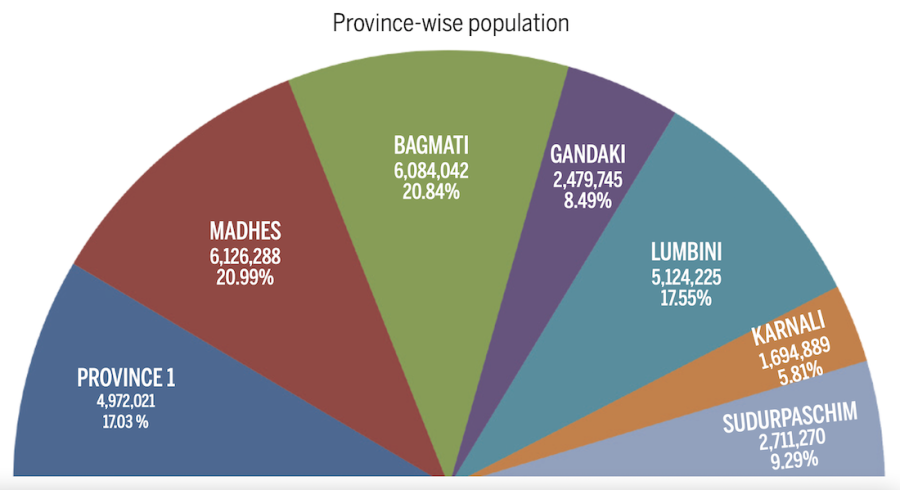Editorial
Demographic imbalances
Short-sightedness has led to this imbalanced distribution of population.
The census conducted by the Central Bureau of Statistics concluded on November 25. The head count revealed that the population of Nepal was increasing at a slow pace, in fact, the slowest in the last 80 years. It is growth nonetheless, but the question is whether it is to be taken positively or as an indication that could spell disaster for the country in the years to come. In most developed countries, projections of a fall in population signal economic woes. Statisticians are quick to inform the administration of the economic challenges the government will need to face concerning labour shortages and a possible impact on the housing market.
After an arduous two weeks, the enumerators gathered much-needed information which showed a modest increase in the population by 0.93 percent. Are the authorities worried about possible labour shortages that may affect economic output? It is highly doubtful. The administration has failed miserably to retain the youth and provide a stable, meaningful environment. Instead of being able to reap the youth demographic dividend, Nepal is in the business of exporting skilled and unskilled talent abroad in exchange for precious foreign exchange.
While there is nothing wrong with ensuring that citizens find jobs overseas, relying on it ultimately does not bode well for a country. And the hallmark for development has always been in retaining the populace to build one’s country. This lack of policy to retain the youth has led to a mass exodus of young people from the towns and villages, leaving only the elderly, women and children to ensure that they remained a functional place. Those unable to find employment abroad were drawn to the cities.
Thus, it may be fair to assume that the administration’s short-sightedness concerning the development of remote regions in Nepal has led to this imbalanced distribution of population in the country. Lest we forget that the Maoist insurgency acted as a catalyst for the imbalance, but what has the administration done in the last 15 years after securing a peace deal? Possibly even decentralisation of vital administrative functions would help persuade people to fan out across the country, but there have been no such steps.
The census shows a parallel between a drop in the hill population and an increase in the Tarai belt population. If this trend continues, it has consequences on two fronts in particular—politics and the economy and a change in socio-economic behaviour. On the economic front, most of the arable land in the Tarai region would have to make way for construction, constricting agricultural output further and adding strain to the existing infrastructure.
And on the political front, an increase in the Tarai population could pave the way for reduced electoral constituencies in the hills and, in turn, further affect development in the hills and contribute to the existing imbalance. It is not the rate of population that should be ringing the alarm bells for the administration, but rather the lack of policies to correct any of the existing demographic imbalances.




 7.12°C Kathmandu
7.12°C Kathmandu














